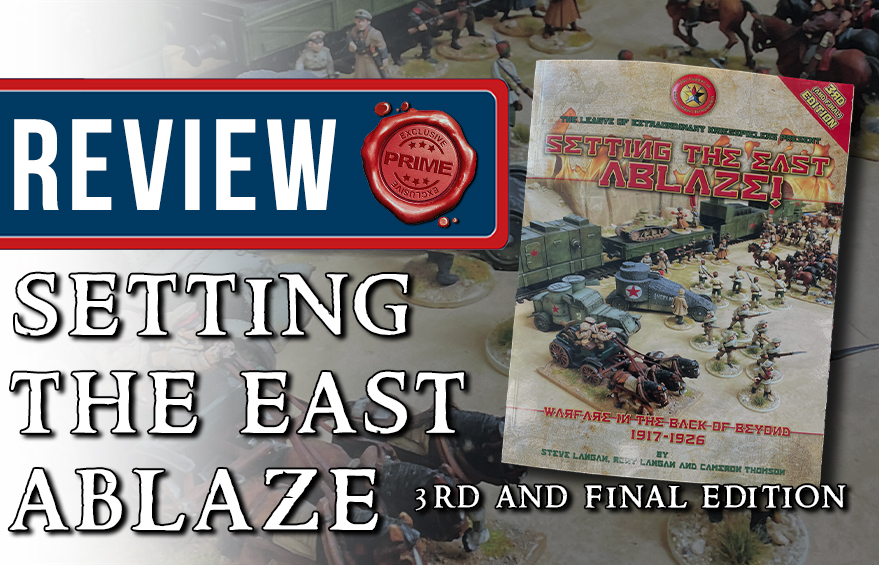Partizan Press – Setting the East Ablaze: 3rd and Final Edition review
Hot off the press comes the third (and, we are assured, final) edition of the popular Setting the East Ablaze (StEA) wargames rules. Produced by Partizan Press, the rules comes as a soft cover A4 book that runs to 117 full-colour, photo-packed pages.
The game covers warfare in Central Europe, Russia, Central Asia, China, and pretty much any remote part of the world, from 1914 through the mid-1930s. For those of you new to StEA, these rules are designed for use with small units, where each of the miniatures is based individually. Regular infantry units contain ten miniatures, with irregulars containing 20, and cavalry usually having eight to ten. Games can be played with any number of units a side, with the authors claiming that, with practice, the rules can easily accommodate any game, from as few as 30 miniatures a side to over 500.
So how does it all work? All units are given a Class Factor, which affects how well they carry out orders, and a Morale Factor, which represents how well they fight. The turn sequence is card-driven, with each unit having an individual card shuffled into a deck. When your card is drawn, that unit may act. What actions it can take are restricted by its class, but can be assisted by nearby Leader and Character models. The game uses D6s only, with a single dice rolled per miniature for firing and melee. Hits are calculated from a base number, plus or minus modifiers for range, cover, and so on, with casualties removed. Failed morale tests gain the target unit a marker, with three accumulated markers causing the unit to rout if they are not rallied. There are rules included for fighting in built-up areas, vehicles (such as armoured cars and tanks), barbed wire, grenades and other bombs, heavy weapons, and even aircraft. The authors have worked hard to keep these rules as simple as possible, while still maintaining the weird ‘back of beyond’ feel that these unusual units should have. You can just as easily use these rules to fight out an encounter between British and Turkish WWI units in Palestine or Mongol Warlords fighting White Russian renegades out on the steppes.
If you are already a Setting the East Ablaze fan, what is new in the third edition? Well, there are new rules for Air Combat, including using planes and balloons to ‘spot’ from the air. The rules for armoured trains have been expanded, as have the rules for melee in built-up areas. The rules for artillery have been updated, and there are brand new rules for Naval warfare – and even for attacks by wild animals. It is the back of beyond, after all.
The rulebook finishes with some suggestions on how to put together your army, with guidelines for all the major European powers, as well as Russian White and Red armies, and a variety of East Asian forces. Finally, there are three sample scenarios to get you started.
Overall, there is a lot to like about these rules. They are written, and easy to pick up, and the fact that you need very few miniatures to get started is a major bonus. Indeed, their skirmish nature means that players can dip their toes into this fascinating wargame period without too much outlay in time and money, collecting Chinese bandits, White Russian renegades, the forces of Mad Baron Roman Von Ungern-Sternberg, and/or who knows what else. The authors state in the introduction that StEA is designed to produce fun games rather than points-balanced ones, and they certainly do that. This book is a must for anyone battling in the back of beyond.






